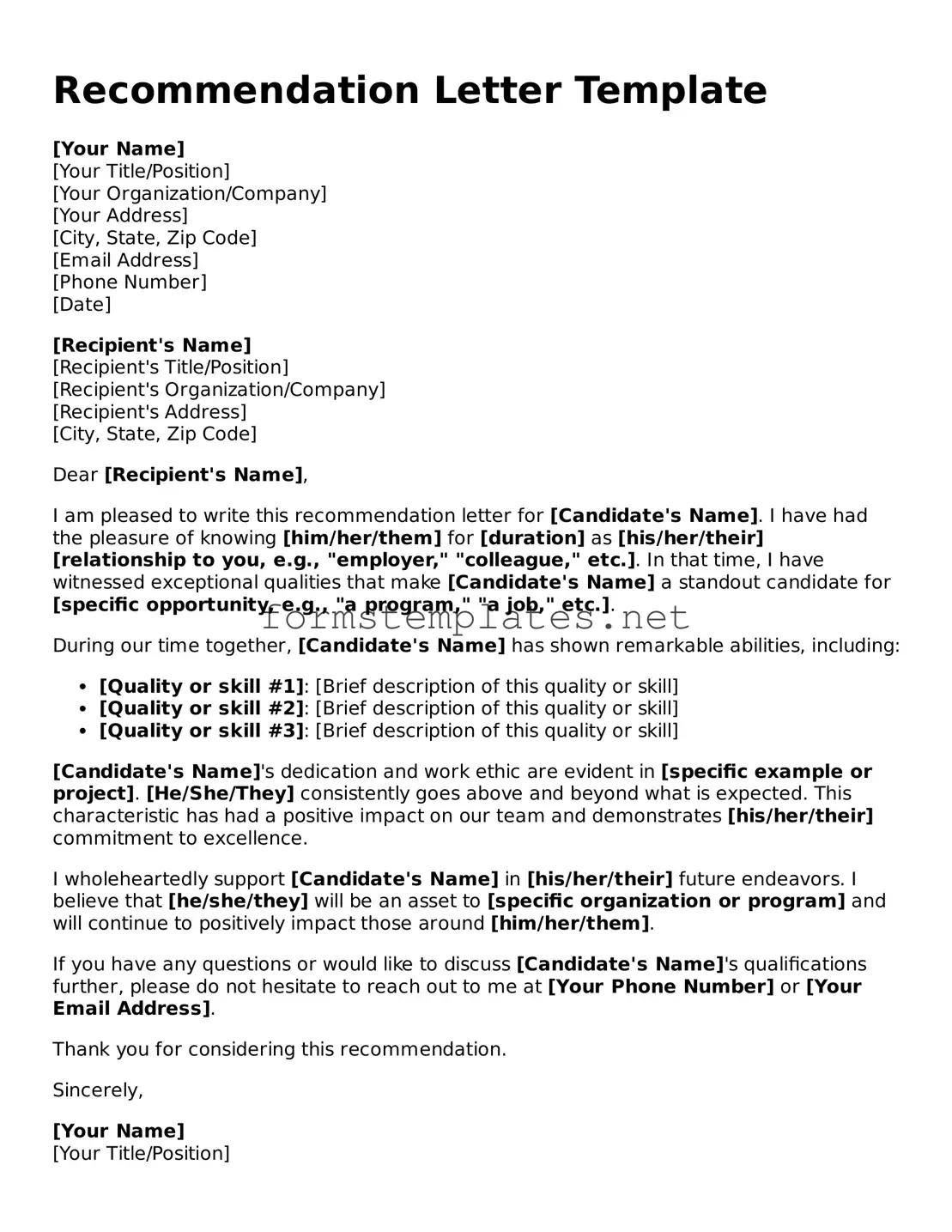Recommendation Letter Template
[Your Name]
[Your Title/Position]
[Your Organization/Company]
[Your Address]
[City, State, Zip Code]
[Email Address]
[Phone Number]
[Date]
[Recipient's Name]
[Recipient's Title/Position]
[Recipient's Organization/Company]
[Recipient's Address]
[City, State, Zip Code]
Dear [Recipient's Name],
I am pleased to write this recommendation letter for [Candidate's Name]. I have had the pleasure of knowing [him/her/them] for [duration] as [his/her/their] [relationship to you, e.g., "employer," "colleague," etc.]. In that time, I have witnessed exceptional qualities that make [Candidate's Name] a standout candidate for [specific opportunity, e.g., "a program," "a job," etc.].
During our time together, [Candidate's Name] has shown remarkable abilities, including:
- [Quality or skill #1]: [Brief description of this quality or skill]
- [Quality or skill #2]: [Brief description of this quality or skill]
- [Quality or skill #3]: [Brief description of this quality or skill]
[Candidate's Name]'s dedication and work ethic are evident in [specific example or project]. [He/She/They] consistently goes above and beyond what is expected. This characteristic has had a positive impact on our team and demonstrates [his/her/their] commitment to excellence.
I wholeheartedly support [Candidate's Name] in [his/her/their] future endeavors. I believe that [he/she/they] will be an asset to [specific organization or program] and will continue to positively impact those around [him/her/them].
If you have any questions or would like to discuss [Candidate's Name]'s qualifications further, please do not hesitate to reach out to me at [Your Phone Number] or [Your Email Address].
Thank you for considering this recommendation.
Sincerely,
[Your Name]
[Your Title/Position]
